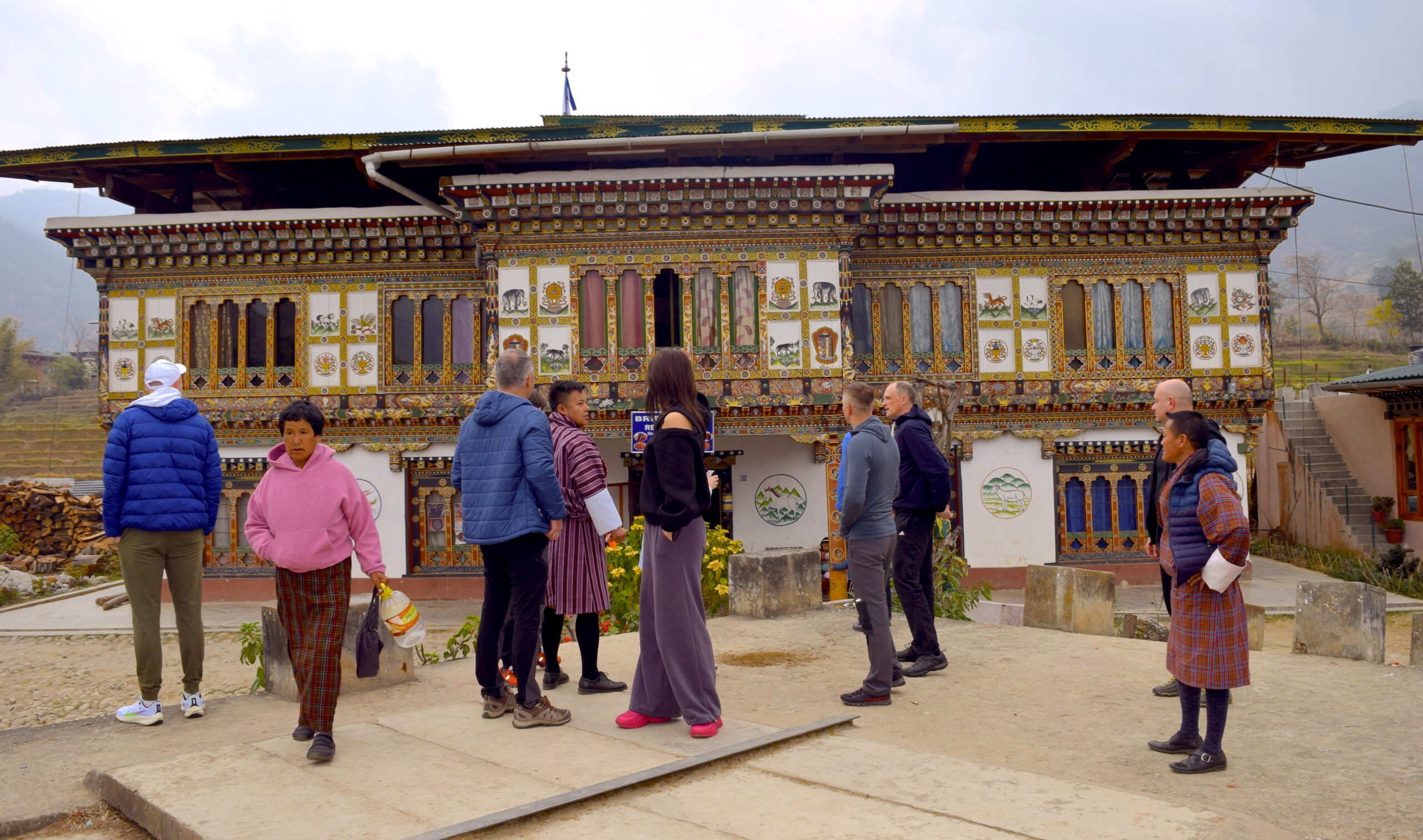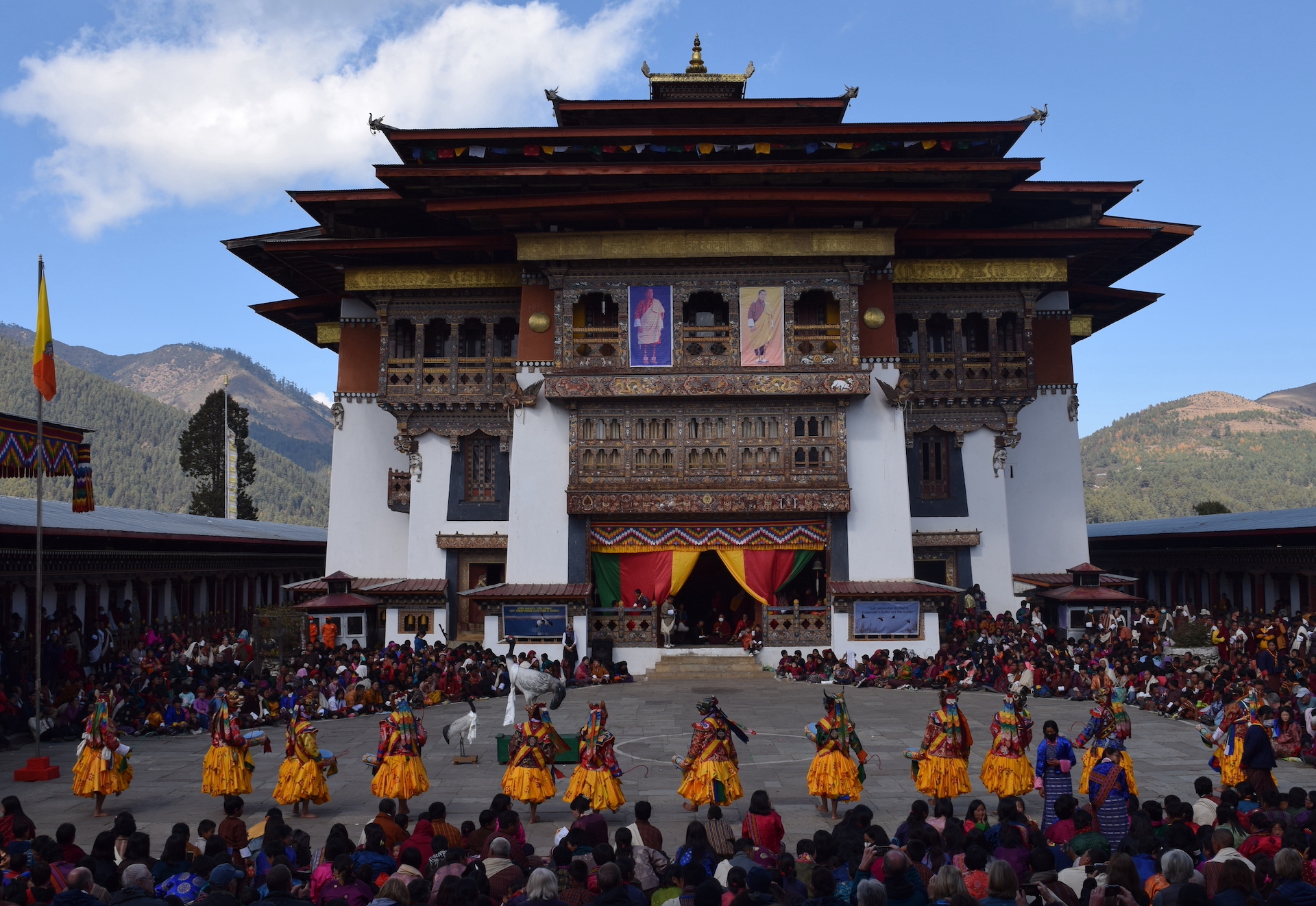Bhutan’s commitment to sustainable development is epitomized through its innovative community-based tourism initiatives. These initiatives not only offer travelers authentic cultural experiences but also empower local communities, promote environmental conservation, and foster socio-economic development.
At the heart of community-based tourism in Bhutan is the concept of homestays. Travelers have the opportunity to stay with local families in rural villages, immersing themselves in the daily life and traditions of Bhutanese communities. This intimate experience allows visitors to participate in household activities, share meals prepared with locally sourced ingredients, and engage in cultural exchange, fostering mutual understanding and appreciation.
Moreover, community-based tourism initiatives often involve the preservation and promotion of traditional arts and crafts. Bhutanese artisans, known for their skill in weaving, painting, woodcarving, and other crafts, play a central role in these initiatives. Travelers can visit artisan workshops and studios, where they can observe the intricate craftsmanship firsthand, learn about the cultural significance of these crafts, and even try their hand at creating their pieces under the guidance of local masters.
In addition to cultural experiences, community-based tourism initiatives in Bhutan also focus on environmental conservation and sustainable development. Many projects aim to protect the country’s pristine natural landscapes and biodiversity while promoting responsible tourism practices. This may include initiatives such as eco-friendly accommodations, waste management programs, and efforts to mitigate the environmental impact of tourism activities.
Furthermore, community-based tourism contributes to socio-economic development by generating income and employment opportunities for residents. By involving communities in the tourism value chain, these initiatives help to redistribute economic benefits more equitably and reduce dependency on external sources of income. This, in turn, contributes to poverty alleviation and the overall well-being of Bhutanese communities.
One example of a successful community-based tourism initiative in Bhutan is the Phobjikha Valley Conservation Area. Here, local communities work together to protect the endangered black-necked cranes that migrate to the valley each winter, while also offering visitors opportunities to learn about traditional farming practices, participate in conservation efforts, and engage in cultural activities such as mask dancing and archery.
In conclusion, Bhutan’s community-based tourism initiatives embody the country’s commitment to holistic development, sustainability, and cultural preservation. By empowering local communities, promoting environmental conservation, and fostering meaningful cultural exchange, these initiatives offer travelers a unique and enriching experience while contributing to the well-being of Bhutanese society as a whole.
Cultural Immersion Activities in Bhutan.
Cultural Immersion Activities in Bhun offers travelers a transformative journey into the heart of this mystical Himalayan kingdom. Through a diverse array of activities, visitors can experience the vibrant traditions, ancient rituals, and profound spirituality that define Bhutanese culture.
One of the most enriching experiences is staying with local families in rural villages. Homestays provide an authentic glimpse into Bhutanese daily life, allowing guests to participate in household chores, share meals prepared with local ingredients, and engage in conversations about traditions and customs. This intimate exchange fosters meaningful connections and deepens cultural understanding.
Participation in traditional rituals and festivals is another highlight of cultural immersion in Bhutan. Throughout the year, the kingdom comes alive with colorful celebrations, such as the Paro Tsechu and Thimphu Tshechu. These religious festivals showcase masked dances, ceremonial rituals, and intricate Bhutanese art forms, providing insight into the country’s spiritual heritage and collective identity.
Bhutan’s culinary traditions are equally captivating, with dishes like ema datshi (chili and cheese stew) and momo (dumplings) reflecting the country’s unique flavors and ingredients. Travelers can engage in hands-on cooking classes to learn the art of Bhutanese cuisine from local chefs, exploring the culinary heritage that nourishes both body and soul.
For those seeking a deeper spiritual connection, Bhutan offers numerous opportunities for meditation and contemplation. Monasteries and temples dot the landscape, offering tranquil settings for introspection and mindfulness. Visitors can join meditation sessions led by Buddhist monks, participate in prayer ceremonies, or embark on silent retreats to rejuvenate the spirit amidst serene natural surroundings.
Exploring Bhutan’s ancient arts and crafts is another avenue for cultural immersion. Skilled artisans continue to practice traditional techniques such as weaving, painting, and woodcarving, preserving centuries-old traditions passed down through generations. Travelers can visit workshops and studios to observe these artisans at work, gaining insight into the intricate craftsmanship that defines Bhutanese craftsmanship.
Trekking ancient trails to remote monasteries and sacred sites offers a deeper appreciation for Bhutan’s cultural and natural heritage. As travelers traverse mountain paths and verdant valleys, they encounter breathtaking landscapes steeped in spiritual significance. Along the way, encounters with local communities provide insights into the symbiotic relationship between people and the land in Bhutan.
Engaging in community-based tourism initiatives further enhances the cultural immersion experience. Travelers can participate in agricultural activities, assist with conservation efforts, or support local artisans through ethical shopping practices. These interactions foster mutual respect and appreciation, creating lasting memories and meaningful connections that transcend cultural boundaries.
In conclusion, cultural immersion in Bhutan offers a multifaceted journey of discovery, where travelers can engage with the country’s rich heritage through authentic experiences, meaningful encounters, and profound insights into the soul of the kingdom.
Visit Bhutan In Spiring Months
Visiting Bhutan in the spring months, particularly from March to May, offers a unique and delightful experience due to various reasons:
- Weather: Spring in Bhutan is characterized by pleasant weather. The temperature starts rising after the winter months, making it an ideal time to explore the country without extreme cold or heat.
- Flora and Fauna: Bhutan is known for its stunning natural beauty. In spring, the landscape bursts into colorful blooms as flowers start to blossom. The rhododendrons, in particular, paint the mountainsides in vibrant hues, creating picturesque scenery. It’s also a time when many species of birds and wildlife are more active.
- Festivals: Bhutanese culture comes alive with several vibrant festivals or tshechus held during the spring months. These festivals showcase traditional dances, music, and rituals, offering visitors a chance to witness the rich cultural heritage of Bhutan. The famous festivals in Bhutan – Paro festival starts from 21 March till 25 March 2024. There are other numuerious festivals held in Spring months like Talo Festival, Gomphu Kora Festival, Gasa Festival and Domkhar Festival.
- Trekking and Outdoor Activities: The comfortable weather in spring makes it an excellent time for trekking and outdoor adventures. Trails become more accessible as the snow melts, allowing for clearer paths and better visibility. Popular treks like the Jomolhari Trek or the Druk Path Trek are especially enjoyable during this time.
- Clear Views of Himalayas: The spring months typically offer clearer skies and better visibility of the majestic Himalayan peaks, providing stunning panoramic views for travelers.
However, it’s essential to consider that while spring offers many advantages, it’s also a popular time to visit Bhutan. Thus, it’s advisable to plan and book accommodations and tours in advance to ensure availability and a smoother travel experience.




